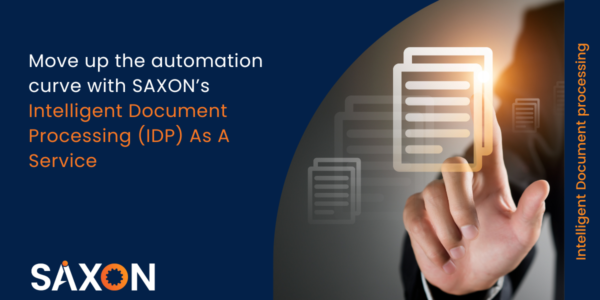During the pandemic, manufacturers faced many testing times owing to lockdowns, travel restrictions and disrupted supply chains. The new work from home trend also hit the production capacities and the demand was suppressed for a few sectors. The crisis forced most manufacturers to rethink their operational strategies and Industry 4.0 technology adoption rates.
As per McKinsey, the technology proved critical for the early adopters of Industry 4.0. Most businesses are accelerating their transformation plans with Industry 4.0 despite the typical challenges created by the pandemic. Before the pandemic, increasing productivity and minimal costs were the focus for manufacturers, but now agility and flexibility in operations emerged as the top strategic priorities. Industry 4.0 for most manufacturers is about centralizing all the data from multiple sources and then unleashing manufacturing analytics for the necessary operations. Let us now look at the role of Power BI in accelerating Industry 4.0 and for extracting manufacturing business intelligence.
The Role of Power BI in Industry 4.0 for Effective Manufacturing Analytics
Industry 4.0 is about multiple technologies across various processes in manufacturing operations. The concept of Industry 4.0 has data and insights at the core powered by smart technologies like IoT, AR/VR, and other smart manufacturing technologies. Manufacturing analytics powered by Power BI can help customize products, enhance production and quality, visualize supply chain and inventory, and create sustainable and profitable business models. The current challenges in manufacturing include:
- Data is collected from many sources, processes, and formats. Most of the time, the data is inconsistent, creating challenges to generate the right insights. Manufacturers collect data successfully but may need more effort in utilizing the data.
- ERPs, production systems, and project management tools often pose challenges in integrating manufacturing analytics, as they are varied, traditional, and humongous.
- Awareness of the rapidly changing manufacturing analytics tools and ecosystem is limited to the executive leaders, thereby creating challenges to set up data-driven culture.
Rethinking with Power BI for manufacturing processes
The processes in manufacturing are multi-faceted, from quality engineering to operations, inventory to supply chain and logistics. It involves numerous complex processes, and analyzing data is always challenging. With Power BI, manufacturers can draw actionable insights using graphs, charts, reports, and the recently added AI capabilities. Let me provide you with a few areas that can be focused on with Power BI for manufacturing analytics.
- Demand Forecasting – Customer preferences tend to change rapidly, and manufacturers are constantly affected. What will be the next product line that consumers prefer in the future? Which products yield the best profitability?
- Vendor Analysis – Disruptions from raw material vendors lead to significant losses for manufacturers. Analyzing the vendor risks for raw material supply can mitigate it, and Power BI reports can help manufacturers visualize it.
- Stock Planning – Inventory levels are critical in meeting the customer demands and the manufacturers’ profitability. Forecasting the stock levels for the future and maintaining the threshold levels to meet the customer demand can be done at ease with Power BI
- Just-In-Time – The concept of Just in Time gained importance in manufacturing; supply chain efficiencies became critical to maintaining the entire value chain. Ensuring the last mile delivery largely depends on the transportation and logistics analysis. With Power BI for the manufacturing industry, you can provide all the integrated insights for each process.
Leveraging Power BI for Manufacturing Operations
Power BI now has additional capabilities to analyze data in real-time and generate insights powered by Machine Learning. Implementing Power BI for manufacturing operations can help you gain actionable intelligence about the production lines, supply chain, sales and marketing, and financial performance. Let us look at a few areas where Power BI can improve performance and efficiencies:
- Optimizing operations – Unlike any other industry, manufacturing involves many interconnected processes, and the data needs to be collated for effective operations. Planning the production lines workforce, utilizing the production capacities, and sales and marketing functions are not just individual functions but also the data flow across these functions. Analysis of target vs. actual production, raw material, plant efficiencies, and remote monitoring are now proactive with real-time manufacturing analytics leveraging Power BI. Besides just looking at the data and revealing insights, Power BI for the manufacturing industry is leveraged for data connectivity across suppliers, manufacturing facilities, and global locations.
- Supply chain efficiencies – Timely product deliveries and shipping costs became crucial with changing commerce and consumer expectations. Manufacturers can visualize their optimal route planning data, transportation costs, consignment costs, and vendor contracts in appealing reports and formats. Additionally, insights about each shipment allow manufacturers to negotiate contracts and analyze shipment performance. Power BI features will enable you to gain insights based on historical and real-time data to proactively address any supply chain issues.
- Inventory Management – Maintaining the optimum inventory level without disrupting manufacturing operations reduces costs while also ensuring product margins. With Power BI for the manufacturing industry, you can use impressive automated reports capability without overwhelming the stakeholders with multiple reports at a time. You can prepare inventory status and threshold reports at various locations and analyze the same with the sales pipeline to generate automated reports to alert specific teams for further decisions. Power BI enables manufacturers to reduce inventory costs by tracking inventory levels and visualizing the data in a single view, defective inventory, stock in and stock out, and raw material contracts from various vendors. You can ensure that quality products and materials are available at all locations. Apart from the real-time view of the stock levels, inventory forecasting effectively estimates production needs and timely raw materials procurement.
- Predictive analytics – Like every other industry, predictive analytics offers significant value to manufacturers. Data is increasing exponentially in every business function and manufacturing process. How can you use this data effectively? The most common use case is leveraging historical data to predict the future. Predictive analytics may not be limited to demand forecasting but is used for visibility in production cycles, inventory planning, workforce, resource optimization, and future envisioning. Power BI provides users with advanced AI and ML capabilities, data visualizations, in-built integrations, DAX, Power Query, and a lot more to access insights at a rapid pace.
- Quality assessment and equipment effectiveness – Predicting the machine downtime and maintenance turns out to be a proactive initiative to improve equipment utilization. With sensors and IoT now being widely used by manufacturers, Power BI can analyze the live feeds and update the stakeholders with possible maintenance issues and equipment utilization insights. Product quality is now a significant factor in gaining customer trust and satisfaction. Manual inspection is not a viable option anymore. Using Power BI, manufacturers can effectively analyze the vital factors and data patterns to provide insights about deviations from the standard product defining features and data. An in-depth analysis of the processes leveraging this data can give end-to-end visibility into quality metrics.
- Financial Management – Any decision remains incomplete without RoI analysis. With Power BI, manufacturers can perform cost-benefit analysis throughout the product and process life cycle. Budget planning for production, operations, sales enablement, marketing, and inventory management can be visualized and forecasted with appealing reports and AI and ML capabilities in Power BI. A more detailed analysis of costs, sales growth, and revenue factors enables manufacturers to focus on the relevant top and bottom-line activities.
Do you have questions about leveraging Power BI for manufacturing analytics? Our experts’ can add value to your data-driven culture. Get in touch with us for your free data assessment.
















